10 Anti-Inflammatory Fruits Bursting With Antioxidants and Fiber
A diet rich in these fruits can help your body fight chronic inflammation.
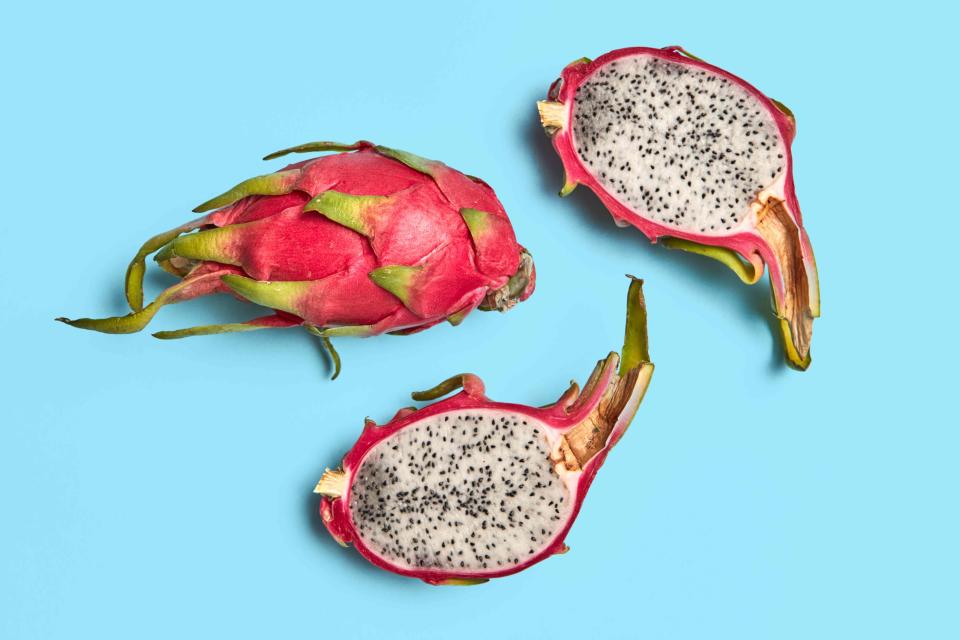
Laroslav Danylchenko/Getty Images
The phrase "anti-inflammatory" is thrown around often in wellness circles, especially in conversations about food and nutrition. But what does it actually mean for something—like a fruit, vegetable, or recipe—to be anti-inflammatory? Two registered dietitians help to unpack this healthy descriptor, recommend their favorite fruits to help reduce unwanted inflammation in your body, and explain what gives them the ability to do that.
Related: 5 Subtle Signs of Inflammation Not to Ignore, According to Doctors
Why Reducing Inflammation Is Important
Your body has the potential to exhibit two different kinds of inflammation. “The first type, called acute inflammation, is the short term pink or red or swelling around a wound that happens while the wound is healing,” says Janice Chow, MS, RD, registered dietitian and owner of nutrition counseling service The Mindful Chow. This kind of inflammation is helpful to your body, and it’s your system’s natural reaction to an unwanted intruder (injury, illness, infection, and so on).
Chronic inflammation is the second kind of inflammation, and it is more damaging to your health if it’s not addressed. It is termed ‘chronic’ because it doesn’t resolve, but occurs for a longer period of time. “Chronic inflammation could be triggered by various factors, like external and internal traumas,” Chow explains. “It might be diseases or conditions that a person might have, or a prolonged environmental impact [that they’ve experienced].” Examples of environmental triggers include psychological stress, air pollution, and poor nutrition. “The chronic inflammation that arises as a result of these triggers can create an environment for diseases to occur,” Chow says.
How Eating Fruit Helps Lower Chronic Inflammation
What makes many types of fruit highly anti-inflammatory foods is that they contain nutrients and compounds that help lower this chronic inflammation, Chow says, drawing particular attention to two major groups of compounds found in food: antioxidants and fiber.
Antioxidants
“The role of antioxidants is to neutralize some of the unstable molecules in our body that might happen during inflammation,” Chow explains.
Unstable molecules called free radicals are produced when your body is exposed constantly to environmental triggers like toxins in the air, alcohol consumption, stress, poor nutrition, and the like, explains Annie Zappulla, BS, RDN, registered dietitian and owner of A to Z Wellness Solutions LLC.
“An excessive amount of these unstable molecules may cause longer term damage to our cells, and there are theories that this kind of cellular damage may lead to chronic diseases,” Chow says. A higher intake of antioxidants through foods (mostly plant foods) can help to neutralize these unstable molecules.
Fiber
Research also points to fiber as the other most beneficial compounds for reducing chronic inflammation, Chow says. One way that fiber may do this is by supporting a gut pH level that decreases inflammatory molecules.
Related: The 5 Food Pillars of Eating for Gut Health, According to a Registered Dietitian
Top Anti-Inflammatory Fruits to Stock Up On
Dragon Fruit
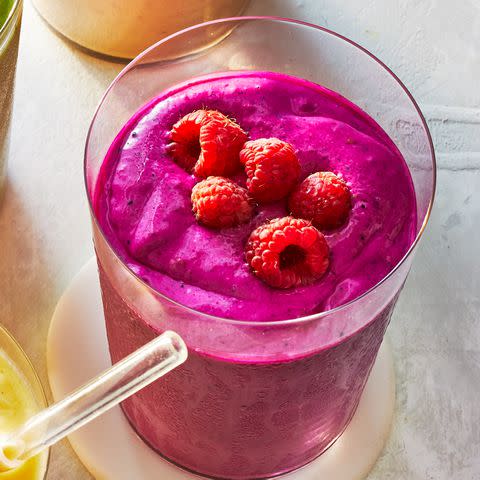
Dragon fruit is not only an eye-catching fruit, it’s high in fiber and antioxidants like vitamins C, E, B2, as well as carotenoids, Chow says. Never tried it before? Here’s exactly how to cut, eat, and enjoy dragon fruit.
Apples
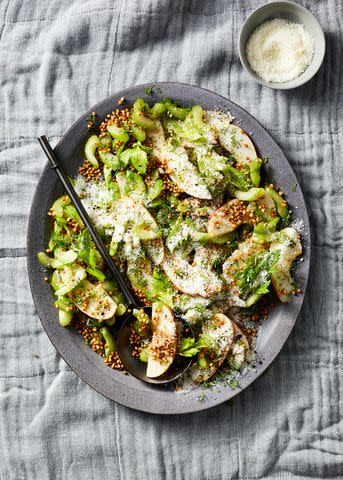
Celery-and-Apple Salad With Crispy Buckwheat
Apples are almost always available at your local grocery store, and their simplicity may cause you to overlook them when loading up your cart in the produce section. But apples really are all that! According to Chow, they’re a great source of antioxidants, namely vitamin C, quercetin, and flavonoids—plus they’re high in fiber, too (reminder: the skin is where a lot of the fiber is).
Related: Eating More Flavonol-Rich Foods Helps Lower Your Risk of Frailty With Age, New Research Finds
Berries
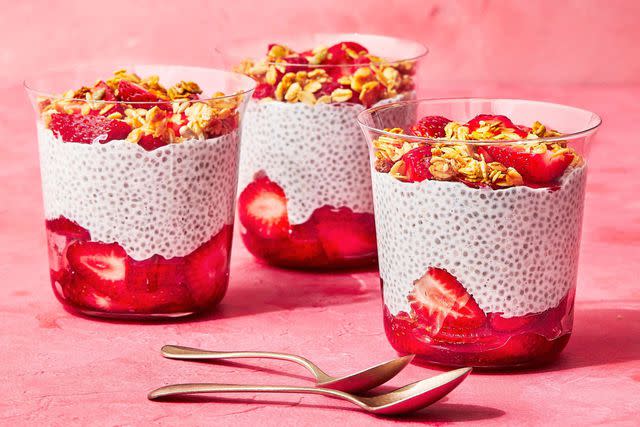
Greg DuPree
Strawberry-Chia Breakfast Pudding
“Studies show that berry consumption is linked to a lower risk of disease,” Zappulla says. And according to Chow, berries are very high in both fiber and antioxidants such as vitamin C (a half cup of strawberries gives you around 50 percent of your Recommended Daily Allowance for vitamin C), quercetin, carotenoids, and anthocyanin. Anthocyanins are the plant pigments that give cranberries, strawberries, blueberries, raspberries, and blackberries their beautiful red, purple, and blue colors, Zappulla explains.
Related: 9 Polyphenol-Rich Foods (and Drinks)—Plus Healthy Ways to Eat More of Them
Stone Fruits
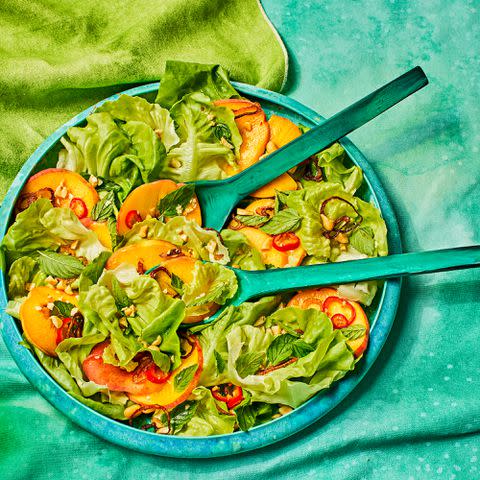
Vietnamese-Inspired Peach Salad
Peaches, plums, and cherries are rich in antioxidants like vitamin C, vitamin A, anthocyanins and phenolic acid, Chow says. They also provide you with a good amount of fiber.
Red and Black Grapes
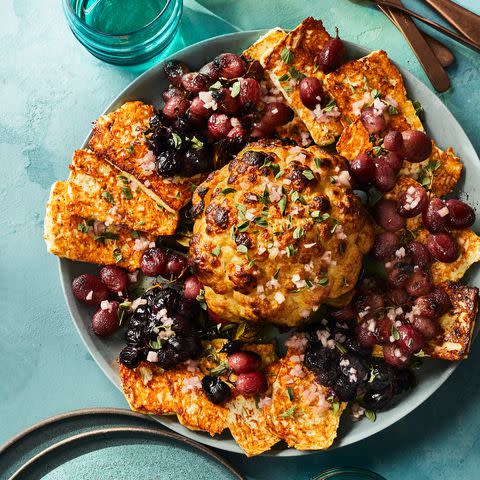
Whole Roasted Cauliflower With Grapes and Feta
“Red and black grapes are well known for an antioxidant called resveratrol, which is found in their skin,” Chow says. “The skin also contains a lot of the fiber, so I would highly suggest consuming grapes with their skin on.” These darker colored grapes are also high in other antioxidants like vitamin C, vitamin B2, anthocyanin, quercetin, and flavonoids.
Citrus Fruits
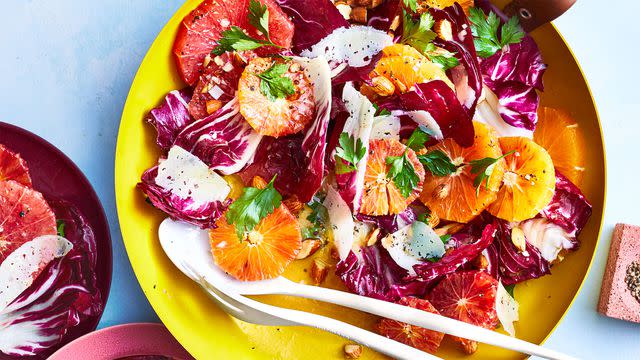
All citrus fruits, including oranges, grapefruits, lemons, and limes, are high in antioxidants like flavonoids and vitamin C (a half cup of grapefruit provides around 40% of the Recommended Daily Allowance of vitamin C), and also contain a good amount of fiber. “One word of caution with grapefruit is that some medications could potentially react with it, so I would consult with your doctor before eating it,” Chow says.
Pomegranate Seeds
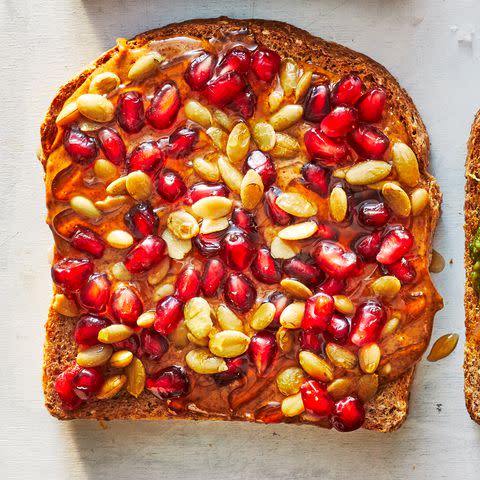
When you munch on juicy, crunchy, ruby-red pomegranate seeds, Chow says you reap the benefits of both fiber and antioxidants like vitamin C, anthocyanin, tannins, and phenolic acid. These pops of nutrients are extremely good for you and a tasty addition to both sweet and savory dishes.
Passion Fruit
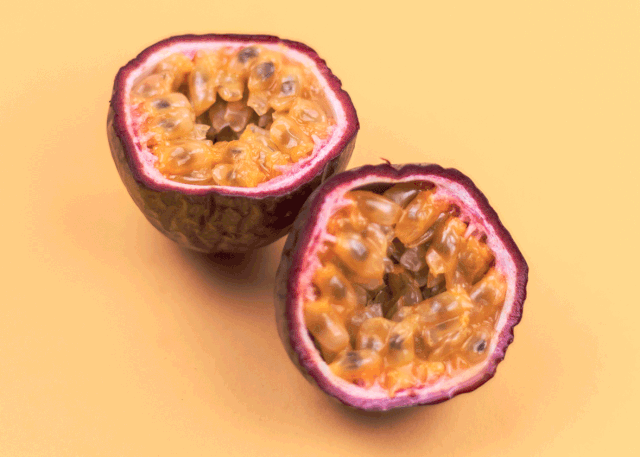
Getty Images
Passion fruit is very high in vitamin C (a half cup provides you with around 40 percent of the Recommended Daily Allowance of vitamin C!), vitamin A and other antioxidant compounds called polyphenols. The seeds are especially high in fiber. Eating half a cup of passion fruit gives you almost 50 percent of the recommended 25 grams of fiber a day for women (38 grams for men).
Pineapple
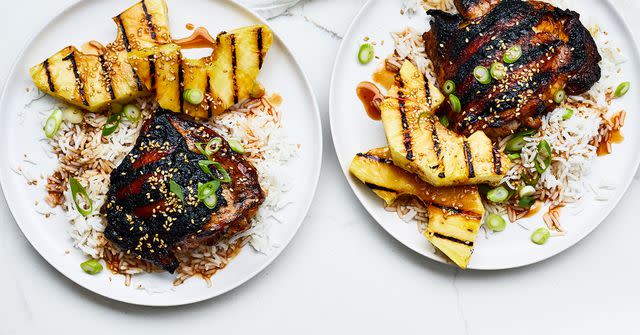
According to Zappulla, pineapple contains a compound called bromelain, which has inflammation reducing properties. Pineapple is also a good source of fiber and antioxidants like vitamin C (a half cup provides you with around 40 percent Recommended Daily Allowance of vitamin C), and vitamin A.
Watermelon
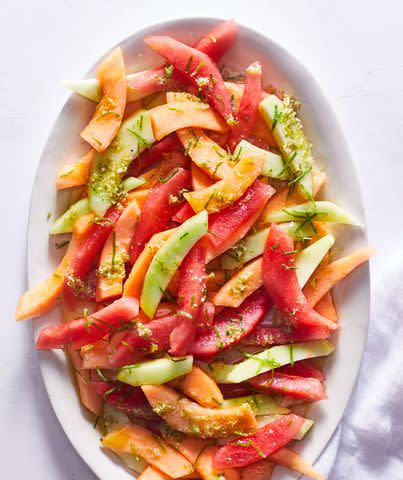
Finally, we have the ultimate poolside snack, watermelon. “Watermelon is known for its bright red color, which comes from another powerful antioxidant called lycopene,” Zappulla says. “It's also a really good source of vitamin C, which is another antioxidant.”
For more Real Simple news, make sure to sign up for our newsletter!
Read the original article on Real Simple.


